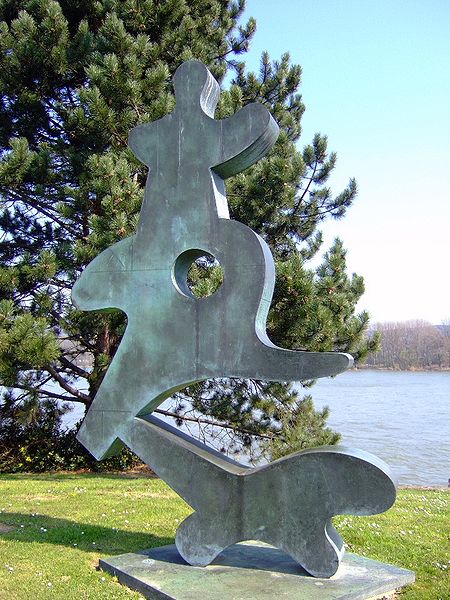<Back to Index>
- Sculptor, Painter and Poet Jean Arp, 1886
PAGE SPONSOR
Jean Arp / Hans Arp (16 September 1886 – 7 June 1966) was a German - French, or Alsatian, sculptor, painter, poet and abstract artist in other media such as torn and pasted paper.
When Arp spoke in German he referred to himself as "Hans", and when he spoke in French he referred to himself as "Jean". Many people believe that he was born Hans and later changed his name to Jean, but this is not the case.
Arp was born in Strasbourg. The son of a French mother and a German father, he was born during the period following the Franco - Prussian War when the area was known as Alsace - Lorraine (Elsass - Lothringen in German) after it had been returned to Germany by France. Following the return of Alsace to France at the end of World War I, French law determined that his name become Jean.
In 1904, after leaving the École des Arts et Métiers in Strasbourg, he went to Paris where he published his poetry for the first time. From 1905 to 1907, Arp studied at the Kunstschule, Weimar, Germany, and in 1908 went back to Paris, where he attended the Académie Julian. In 1915, he moved to Switzerland, to take advantage of Swiss neutrality. Arp later told the story of how, when he was notified to report to the German consulate, he avoided being drafted into the army: he took the paperwork he had been given and, in the first blank, wrote the date. He then wrote the date in every other space as well, then drew a line beneath them and carefully added them up. He then took off all his clothes and went to hand in his paperwork. He was told to go home.
Arp was a founding member of the Dada movement in Zürich in 1916. In 1920, as Hans Arp, along with Max Ernst, and the social activist Alfred Grünwald, he set up the Cologne Dada group. However, in 1925 his work also appeared in the first exhibition of the surrealist group at the Galérie Pierre in Paris.
In 1926, Arp moved to the Paris suburb of Meudon. In 1931, he broke with the Surrealist movement to found Abstraction - Création, working with the Paris based group Abstraction - Création and the periodical, Transition.
Throughout the 1930s and until the end of his life, he wrote and published essays and poetry. In 1942, he fled from his home in Meudon to escape German occupation and lived in Zürich until the war ended.
Arp visited New York City in 1949 for a solo exhibition at the Buchholz Gallery. In 1950, he was invited to execute a relief for the Harvard University Graduate Center in Cambridge, Massachusetts, would also be commissioned to do a mural at the UNESCO building in Paris. In 1954, Arp won the Grand Prize for Sculpture at the Venice Biennale.
In 1958, a retrospective of his work was held at the Museum of Modern Art in New York City, followed by an exhibition at the Musée National d'Art Moderne, Paris, France, in 1962.
The Musée d'art moderne et contemporain of Strasbourg houses many of his paintings and sculptures.
Arp's first wife, the artist Sophie Taeuber - Arp, died in Zürich in 1943, and he subsequently married the collector Marguerite Hagenbach. Arp died in 1966, in Basel, Switzerland.
